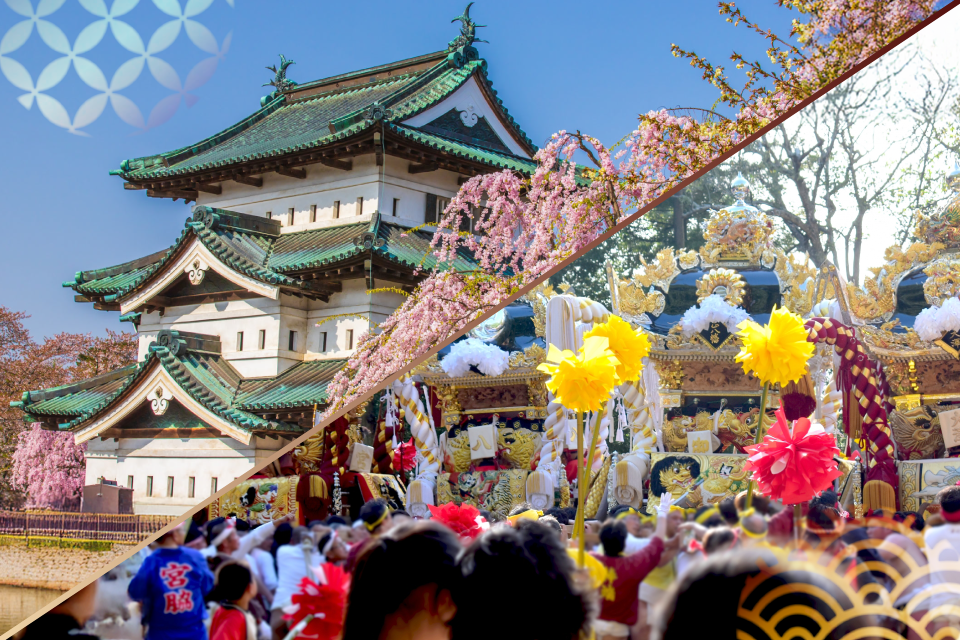
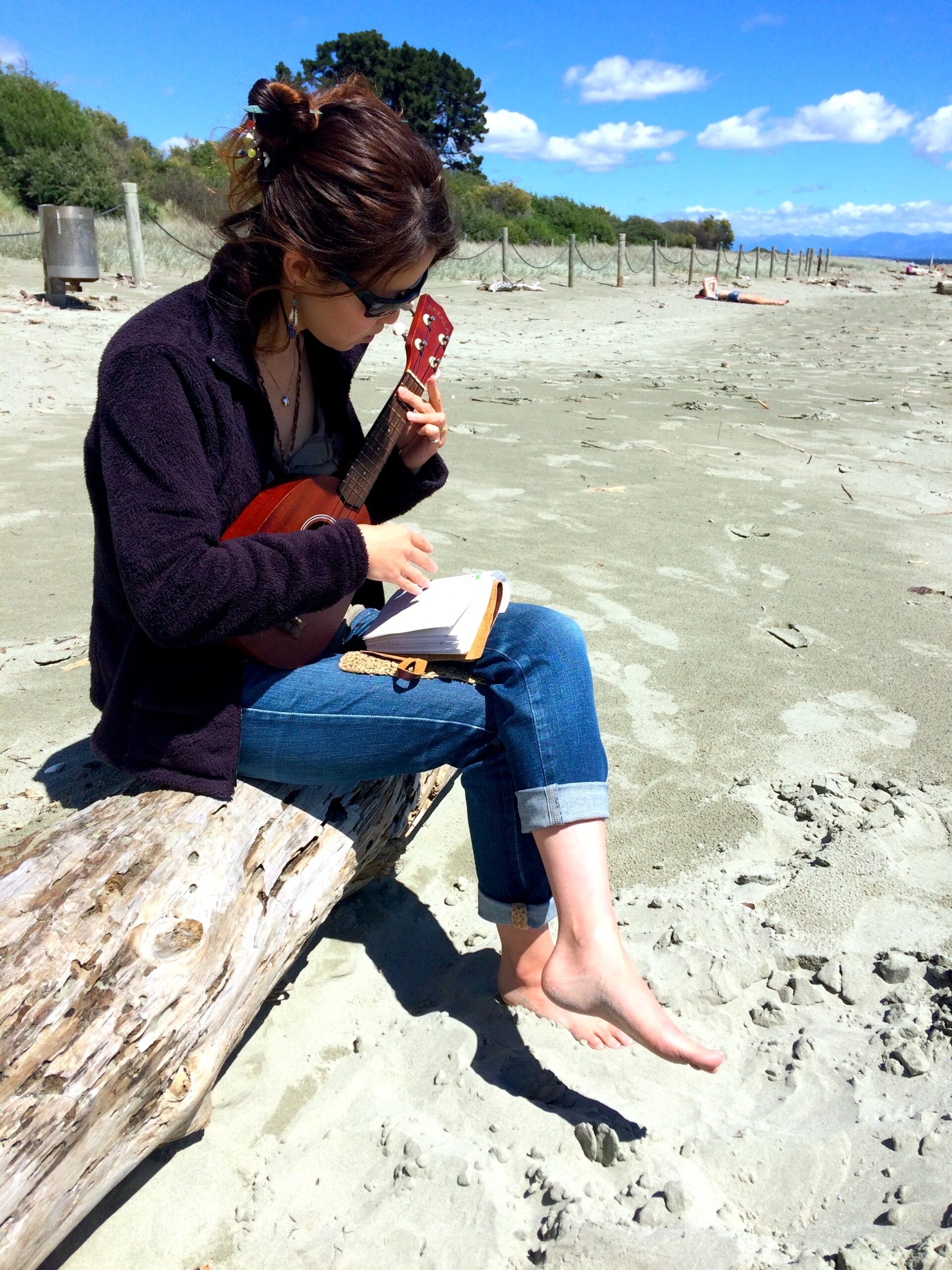
Japan’s festivals, or matsuri, offer a powerful mix of tradition, energy, and community spirit. From fire-lit winter rituals to dance-filled summer nights, each season brings something unique.
This guide covers the best times and places to join the celebration in 2025—plus practical tips on what to wear, what to eat, and how to navigate the crowds like a local.
What Is a Japanese Matsuri Festival ?
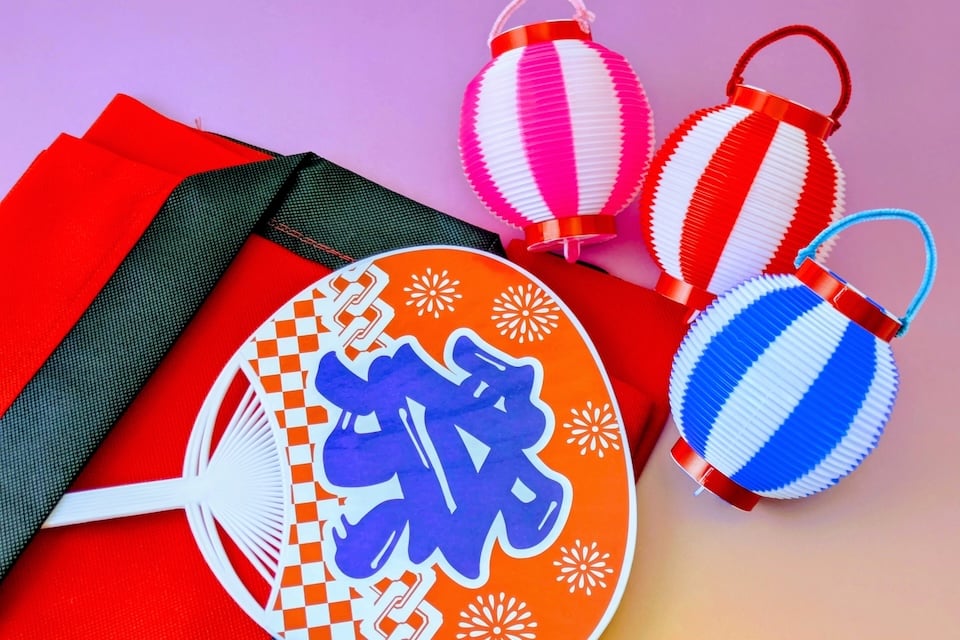
Japanese matsuri (祭り, festival) are lively celebrations held throughout the year to honor seasons, spirits, and local traditions.
From small village rituals to large-scale parades, matsuri reflect Japan’s deep cultural roots and community spirit. They blend music, dance, food, and faith into joyful events that connect people to history and each other.
The Meaning and Spirit Behind Matsuri
Originating from matsuru (“to worship”), matsuri began as Shinto rituals honoring kami (神, spirits or gods) found in nature and ancestors. Traditionally, they marked key agricultural moments—prayers for planting in spring, protection in summer, thanks in autumn, and purification in winter.
A famous myth tells of sun goddess Amaterasu, who hid in a cave, darkening the world. The gods held a joyful gathering to draw her out, restoring light—considered the first festival.
Today, matsuri continue this tradition: uplifting spirits, honoring nature, and bringing communities together.
They are a vibrant echo of Japan’s spiritual roots and seasonal rhythms.
Traditional Elements: Parades, Music, and Community
A highlight is the mikoshi (神輿, portable shrine), carried through streets to bless the community. Chanting locals in happi coats bounce it energetically, while others showcase dashi floats decorated with lanterns or mechanical figures.
Taiko drums, flutes, and cymbals create the festive ohayashi soundtrack. Summer brings Bon odori dances honoring ancestors, where people in yukata join circles of movement. Festivals like Awa Odori fill streets with joyful chants and synchronized steps.
Beyond spectacle, matsuri are deeply participatory. Locals and visitors dance, cheer, and savor yatai street food, sharing in a unique blend of tradition, energy, and community spirit.
Regional Variations Across Japan
Just as food and dialects vary by region, so do Japanese festivals. Each matsuri reflects local history, climate, and traditions.
In the snowy north, Aomori’s Nebuta Matsuri features giant illuminated warrior floats, lighting up the summer night. Down south in Okinawa, Obon is marked by Eisa dance—distinct in rhythm and costume from mainland styles.
Even shared themes take on local flair. Kyoto’s Obon ends with Gozan Okuribi, where symbolic mountain bonfires send spirits home. Meanwhile, Tokushima’s Awa Odori explodes with lively street dancing. Farming towns hold harvest parades or rice straw rituals, while coastal villages celebrate the sea with boat blessings.
Local pride shines through in chants and costumes—from “Rassera!” in Aomori to the loincloths of Okayama’s Hadaka Matsuri. Exploring regional matsuri is like traveling through Japan’s cultural kaleidoscope—each one unique, yet connected in spirit.
Top Must-See Festivals in Japan in 2025
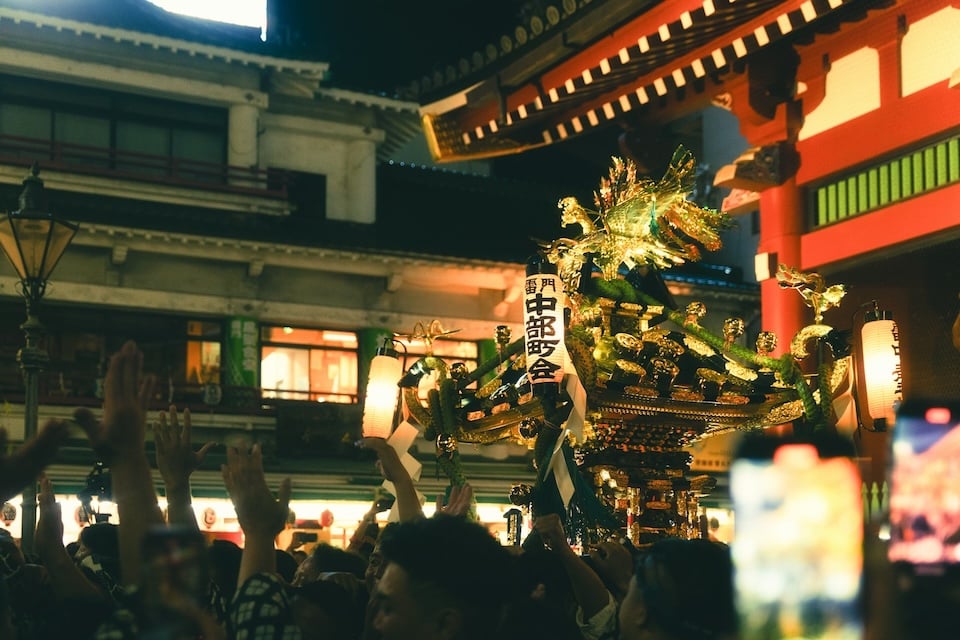
With so many festivals to choose from, which ones should be at the top of your Japan travel bucket list? Here we highlight several must-see matsuri in 2025 – famous celebrations that offer an unforgettable experience for visitors.
These festivals showcase the best of Japanese culture, from ancient rituals to dazzling entertainment. Mark your calendar for these events and get ready to dive into the excitement!
Gion Matsuri (Kyoto, July)
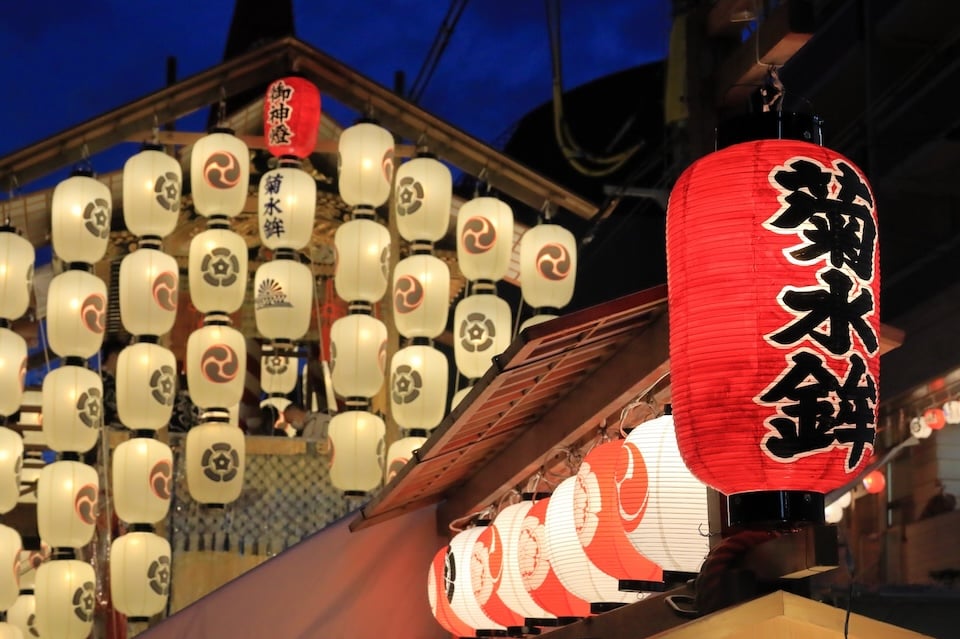
Gion Matsuri (祇園祭) is Kyoto’s most famous festival, held every July and rooted in over 1100 years of tradition. Its highlight is the Yamahoko parade on July 17 and 24, featuring towering wooden floats—“moving galleries”—pulled through city streets with music and fanfare.
In the evenings, Yoiyama brings lantern-lit streets, food stalls, and locals in yukata. With over 200,000 attendees, early arrival or reserved seating is advised. More than a spectacle, Gion Matsuri reflects Kyoto’s deep cultural pride and centuries of community spirit.
| Dates | July 1–31, main parades on July 17 & 24 |
| Shrine | Yasaka Shrine (八坂神社, Yasaka Jinja) |
| Access | Short walk from Gion-Shijō Station (Keihan Line) |
| Parade Area | Around Shijo-dori & Karasuma-dori (Downtown Kyoto) |
| Traffic | Restrictions during parade times |
| Seating | Paid grandstands (reserve in advance) |
| Dress | Yukata recommended |
| Accommodation | Book several months ahead (high demand) |
Sumidagawa Fireworks Festival (Tokyo, July)

Held on the last Saturday of July, the Sumidagawa Fireworks Festival (隅田川花火大会) is Tokyo’s biggest summer fireworks show, dating back to 1733.Over 20,000 fireworks light up the night sky above the Sumida River, with the Tokyo Skytree in view and nearly a million spectators cheering from riverbanks, rooftops, and balconies.
Visitors arrive early with picnic mats, many wearing yukata, and enjoy snacks from yatai (food stalls) like yakisoba and shaved ice.The atmosphere blends Edo-era tradition with modern Tokyo energy.For the best views, consider rooftop spots or river cruises.
| Date | Last Saturday in July (confirm 2025 schedule) |
| Time | 7:00 PM – 8:30 PM |
| Location | Sumida River near Asakusa |
| Entry | Free (paid seats may be available) |
| Nearest Stations | Asakusa, Kuramae (expect heavy crowd control) |
| Recommended Gear | Fan, water, yukata, picnic mat |
| Temperature | ~80°F (27°C) at night |
Obon Festival (Nationwide, August)
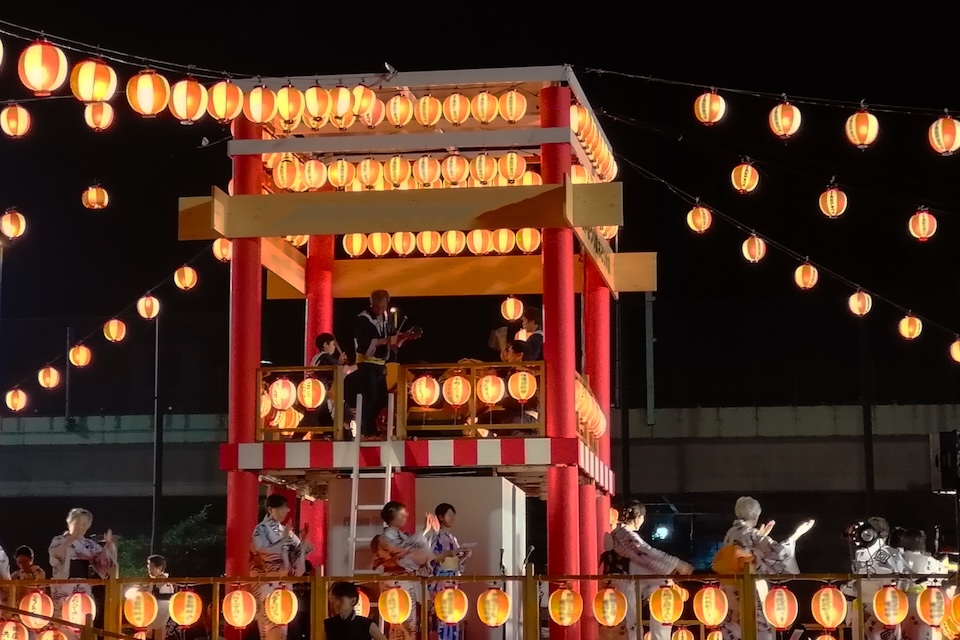
Obon Festival (お盆), held around August 13–16, is a nationwide Buddhist event honoring ancestral spirits believed to return temporarily. Families welcome them with Bon Odori (盆踊り) dances, lanterns, and rituals.
In parks and temple grounds, people dance in circles wearing yukata to folk songs—open to anyone. Kyoto’s Gozan no Okuribi lights giant bonfires on hills, while toro nagashi ceremonies float lanterns down rivers to guide spirits home.
Though rooted in family traditions, Obon offers visitors a chance to join heartfelt celebrations. Just plan ahead—travel during Obon can be crowded.
| Festival Name | Obon Festival (お盆, Obon) |
| Period | Mid-August (typically August 13–16) |
| Main Events | Bon Odori dances, lantern lighting, fire & river ceremonies |
| Major Cities | Tokyo, Kyoto, Osaka, regional towns |
| Highlights | Gozan no Okuribi (Kyoto), Toro Nagashi (Tokyo, others) |
| Dress Code | Yukata (optional but common) |
| Participation | Open to public, free in most areas |
| Travel Advisory | Peak domestic travel season – book trains/flights early |
Aomori Nebuta Festival (Aomori, August)
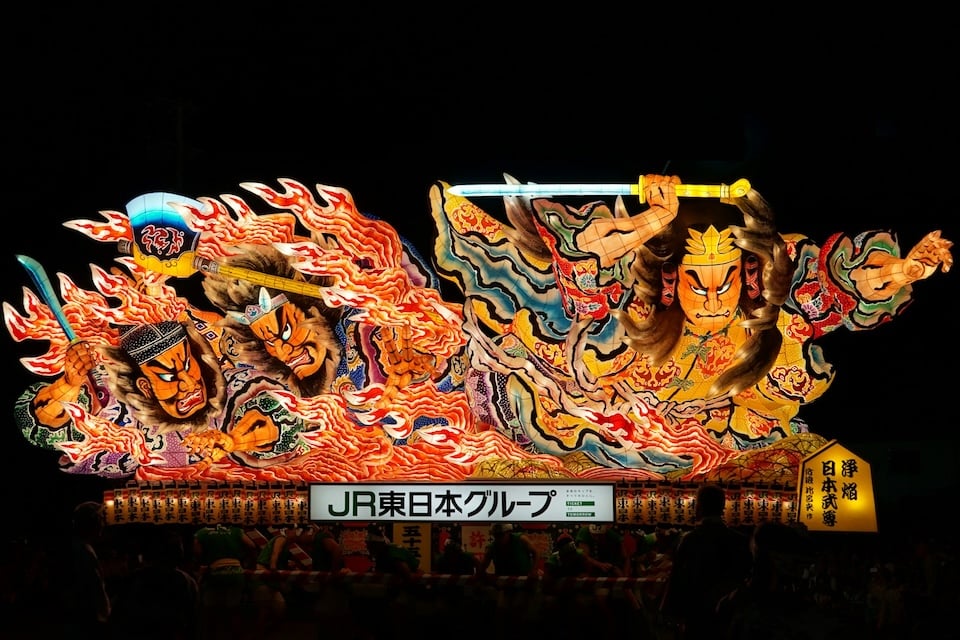
From August 2–7, Aomori City hosts the Nebuta Matsuri (青森ねぶた祭), one of Japan’s most dazzling summer events. The festival features giant illuminated floats made of washi paper depicting warriors and mythical scenes, parading through the streets each night.
These glowing works of art, some up to 30 feet wide, are crafted over months and mesmerize over 2 million visitors annually.
The action doesn’t stop at watching—visitors can join the parade by renting a Haneto costume, dancing alongside floats while chanting “Rassëra!” to live taiko drums and flutes.
On the final night, floats float across the bay as fireworks light up the sky in a breathtaking finale.
| Category | Details |
| Dates | August 2–7 |
| Location | Aomori City (~3 km parade route) |
| Parade Time | 7:00 PM (Aug 7 only: 1:00 PM) |
| Participation | Anyone in Haneto costume can join |
| Entry | Free (paid seating available) |
| Access | Walkable from Aomori Station / Shinkansen |
| Final Night | Harbor float parade + fireworks (Aug 7) |
| Temperature | ~75°F (24°C) evenings |
Sapporo Snow Festival (Hokkaido, February)
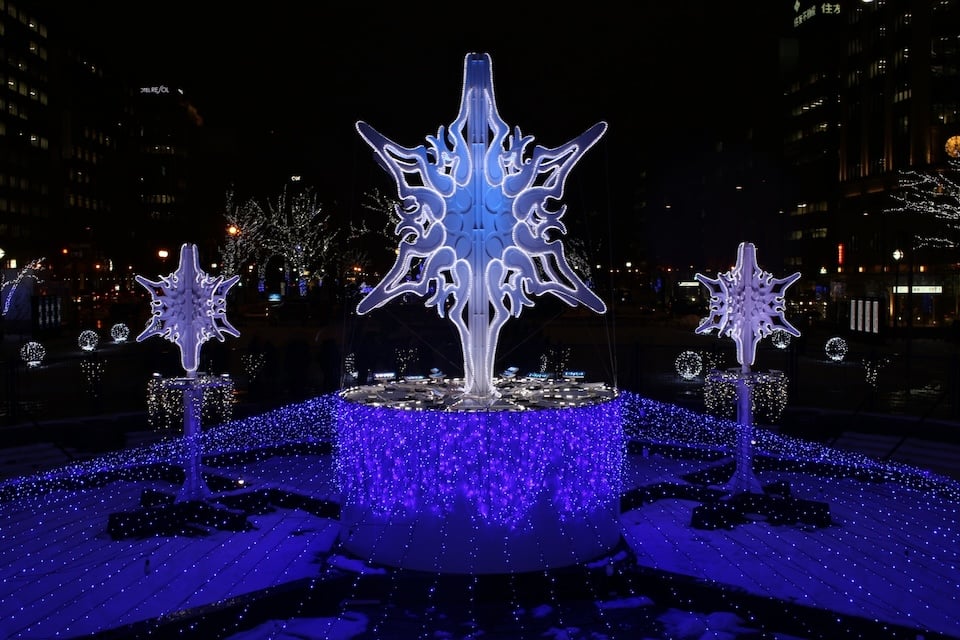
Sapporo Snow Festival (さっぽろ雪まつり) is Japan’s most famous winter celebration, held every February in Hokkaido’s capital. Over one week, Odori Park, Susukino, and Tsudome transform into a snowy dreamland featuring massive snow sculptures, intricate ice carvings, and fun winter activities.
The main attraction is Odori Park’s enormous sculptures—some the size of buildings—illuminated at night and themed on everything from anime to historical icons. At Susukino, glowing ice sculptures and seafood-themed carvings line the streets, while Tsudome offers snow slides and family fun.
Visitors can warm up with Hokkaido delicacies like miso ramen, grilled corn, and jingisukan. With free entry, this event draws millions, so early booking is essential. Be prepared for frigid temps (15–25°F / -9 to -4°C) and icy streets—bundle up and wear traction boots.
| Main Site | Odori Park (大通公園, Odori Kōen) |
| Sub-sites | Susukino (すすきの), Tsudome (つどーむ) |
| Access | Odori Subway Station / Sapporo Station + 10–15 min walk |
| Entry | Free |
| Best Visit Time | Early February |
| Avg. Temp | 15–25°F(-9 to -4°C) |
| Dress Code | Heavy coat, gloves, insulated boots recommended |
| Food Highlights | Miso ramen, grilled corn, jingisukan, sweet potatoes |
Cherry Blossom Festivals (Nationwide, March–April)
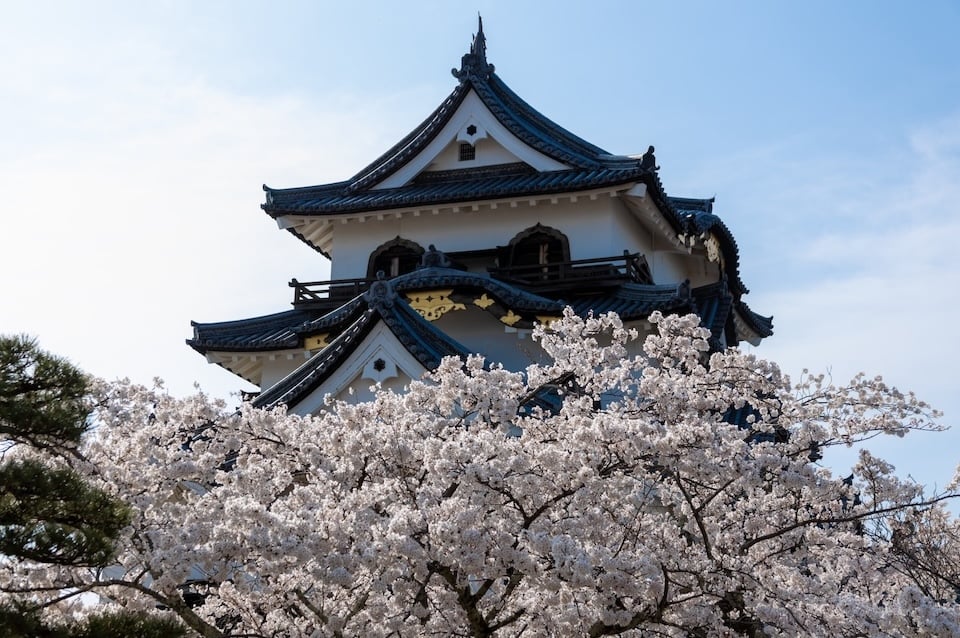
Late March – April (nationwide)
Spring in Japan is celebrated with cherry blossom festivals across the country. During peak bloom, parks and castles are filled with sakura (cherry blossoms) and hanami (花見, flower viewing) picnics. Lantern-lit nights, food stalls, and joyful gatherings create a magical, communal atmosphere.
Hirosaki Castle Park (late April) is especially famous, with over 2,600 trees, pink moats, and night illuminations. Tokyo’s Ueno Park, Kyoto’s Maruyama Park, and Osaka Castle Park also host large-scale festivals with music, snacks, and picnics under the blossoms.
Blossoms bloom for just a week in each location, making timing crucial. Check forecasts in advance and be ready to embrace the crowds and celebrate spring’s fleeting beauty.
| Festival Name | Sakura Matsuri (桜祭り, Cherry Blossom Festival) |
| Peak Period | Late March – April (varies by region) |
| Highlights | Hanami, lanterns, food stalls |
| Famous Spots | Hirosaki Castle, Ueno Park, Maruyama Park |
| Entry | Free (some areas may charge for light-ups etc.) |
| Food | Sakura mochi, bento, sake |
| Weather | 50–65°F(10–18°C), light spring clothing |
Whether you’re watching or dancing, Nebuta’s vibrant energy, glowing floats, and deep-rooted tradition make it an unforgettable celebration of Japan’s artistic and communal spirit.
Seasonal Festivals in Japan: A Year-Round Calendar
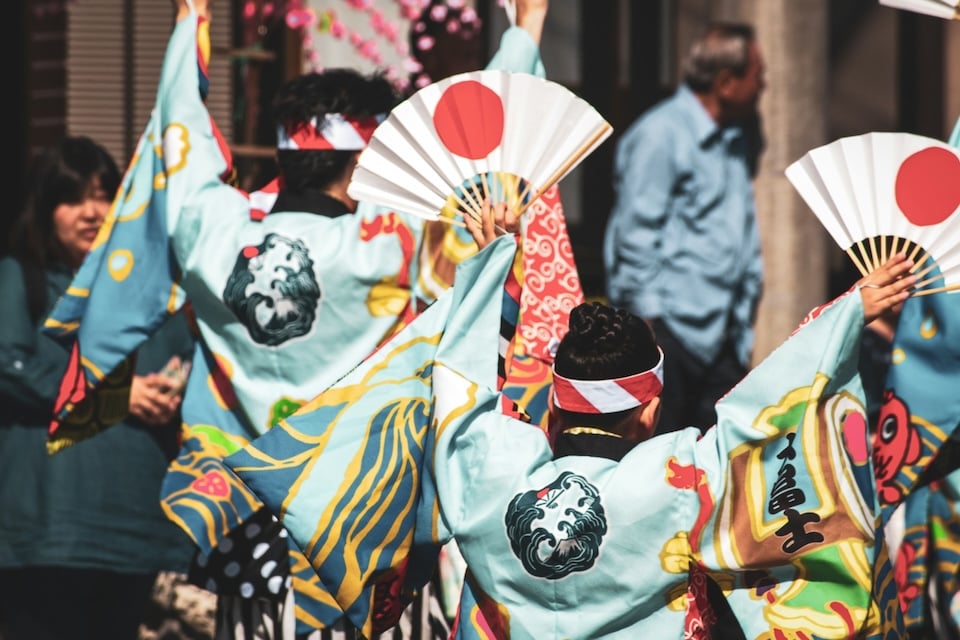
Each season in Japan brings unique festivals that reflect nature’s rhythms and centuries-old traditions. Many originated from agricultural cycles or spiritual practices tied to the seasons. Whether you visit in spring, summer, autumn, or winter, you’ll find cultural events that beautifully express the essence of that time of year.
Here’s an overview of what to expect, season by season.
Spring Festivals: Cherry Blossoms and Cultural Traditions
Spring in Japan celebrates renewal with iconic Cherry Blossom Festivals and hanami (花見, flower viewing) picnics under blooming sakura.Rice planting rituals like the Otaue Festival honor agricultural traditions, while Hina Matsuri (March 3) features hina doll displays for girls’ health.
Elegant parades such as Kyoto’s Aoi Matsuri and Nikko’s Yayoi Festival reenact ancient court life.
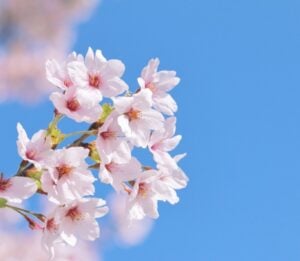
Summer Matsuri: Dancing, Yukata, and Fireworks
Summer is Japan’s peak matsuri season, bursting with energy from June to August. Expect Bon Odori dances, fireworks, mikoshi, and yukata-filled streets.
Major highlights include Osaka’s Tenjin Matsuri with river parades, Awa Odori’s mass street dancing, and Gujo Odori’s all-night festivities. From fire rituals to local shrine fairs, summer festivals blend tradition and fun under warm, lantern-lit skies.
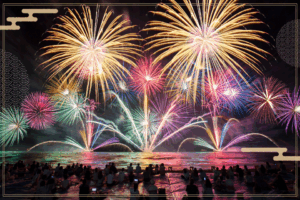
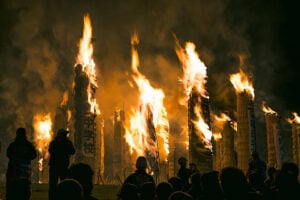
Autumn Celebrations: Harvest and Cultural Parades
Autumn brings a festive blend of tradition and fire-lit spectacle from September to November. As leaves turn red and gold, matsuri celebrate harvests and heritage.
Highlights include Kyoto’s Jidai Matsuri and Kurama Fire Festival, the dramatic mikoshi battles of Himeji’s Nada Matsuri, and lantern-lit floats in Takayama.
With cooler air and deep cultural roots, autumn festivals offer both beauty and intensity.
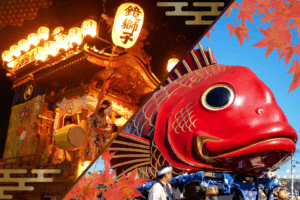
Winter Events: Snow Sculptures and Illuminations
Winter matsuri (Dec–Feb) glow with fire, light, and spiritual cleansing. From snowy lantern paths in Otaru to blazing torch battles in Nagano’s Nozawa Onsen, these festivals embrace the season’s chill with striking beauty.
Celebrate the New Year with shrine visits, see giant snow sculptures in Sapporo, or brave the Hadaka Matsuri’s purifying rituals.
Cold outside, but full of warmth and wonder.
Festivals in Tokyo: A Blend of Tradition and Modernity
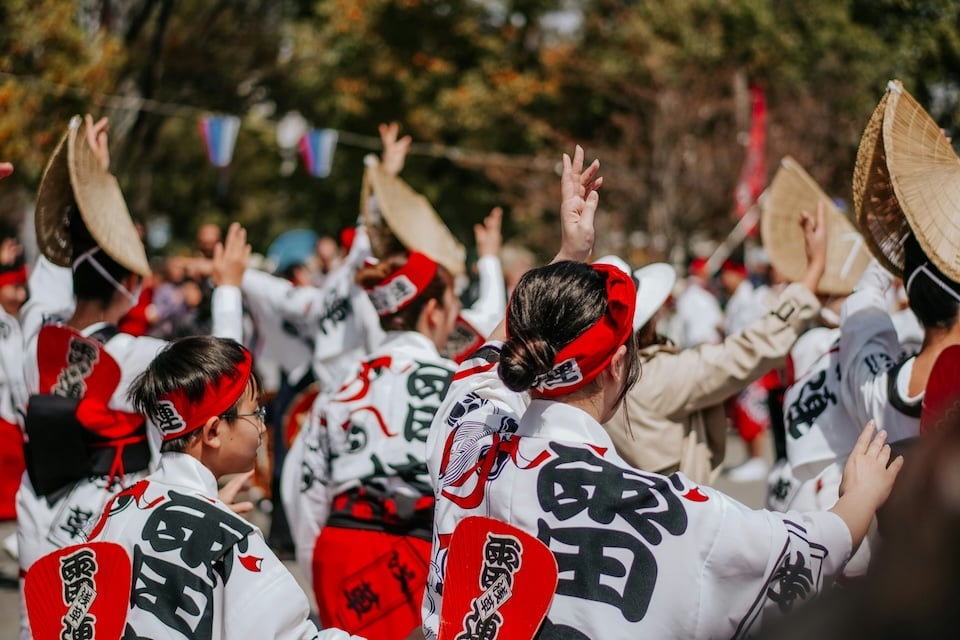
In Tokyo, ancient rituals and modern culture coexist in vibrant harmony. From historic shrine processions to anime-themed parades, the city’s festivals offer a dynamic mix of tradition and trend.
Whether you’re drawn to spiritual ceremonies or pop celebrations, Tokyo’s festival scene captures the essence of old and new Japan.
Mitama Festival (Yasukuni Shrine, July)
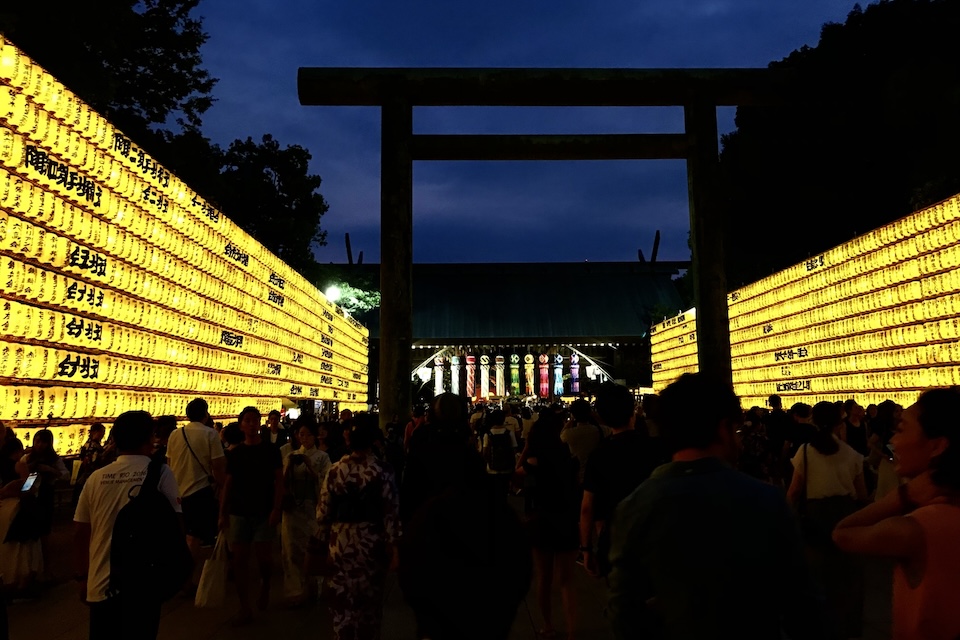
Held during Obon (July 13–16), the Mitama Festival at Yasukuni Shrine features over 30,000 glowing lanterns honoring the spirits of the dead.
The shrine grounds light up with towering walls of lanterns, creating a serene yet festive atmosphere.
Visitors stroll among the lights, enjoy yatai food stalls, and watch performances ranging from taiko drumming to Bon Odori.
Despite its central Tokyo location, the festival feels like a peaceful, glowing retreat of remembrance and celebration.
Kanda & Sannō Matsuri (Alternating Years)
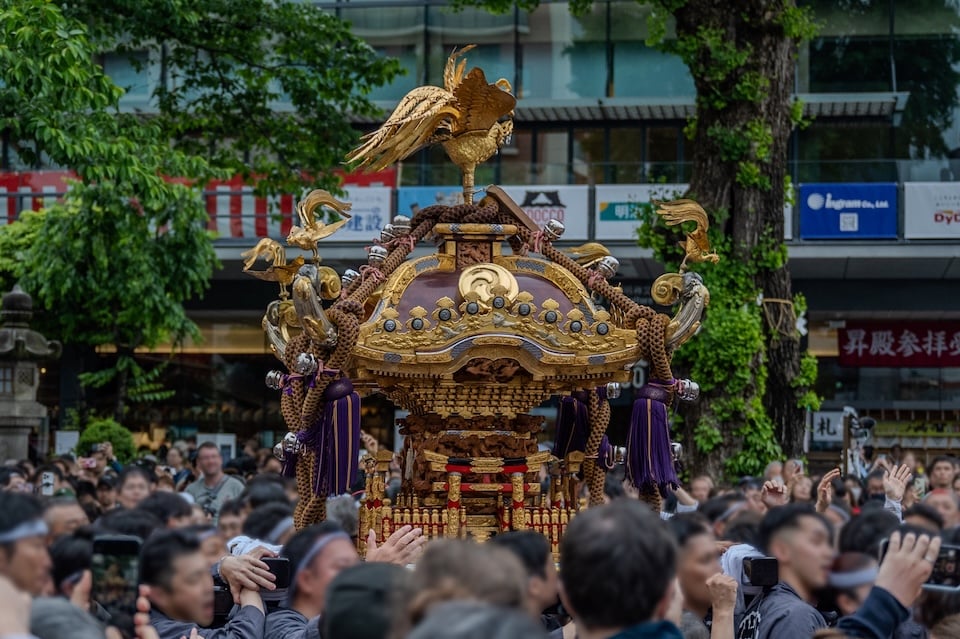
Kanda Matsuri and Sannō Matsuri alternate in scale each year to minimize disruption—Kanda Matsuri takes center stage in odd-numbered years (next in 2025). Centered at Kanda Myōjin Shrine near Akihabara, this grand festival honors prosperity and features over 100 mikoshi (神輿, portable shrines), historical costume parades, and floats weaving through Tokyo’s business districts.
The lively chants of “Wasshoi!” echo through modern skyscrapers, blending tradition with urban energy.
Sannō Matsuri (Even-Numbered Years)
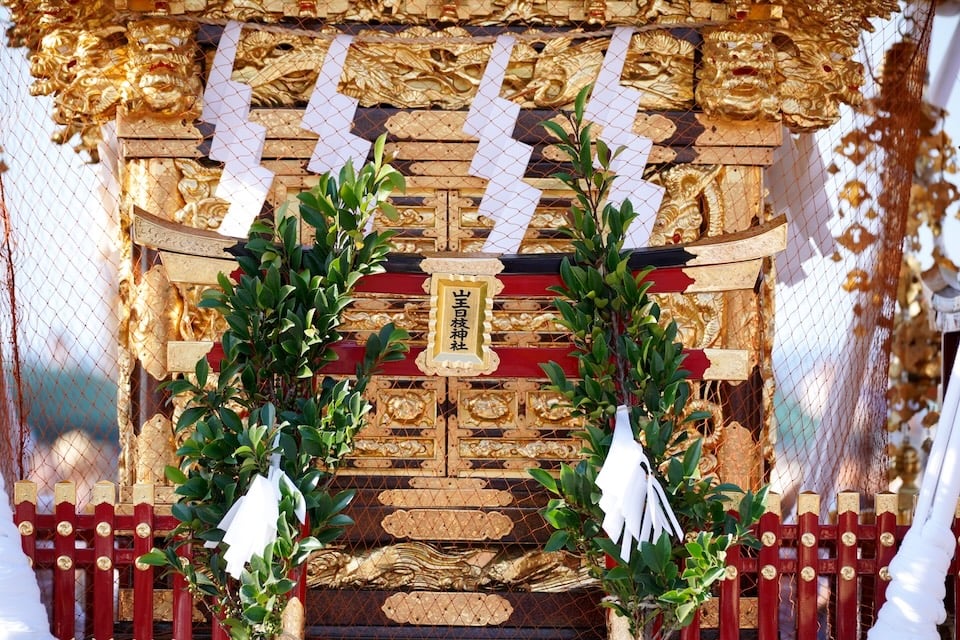
Held in even-numbered years (next in 2026), Sannō Matsuri centers on Hie Shrine near the Imperial Palace. Known for its elegance, the festival features a 2,000-person procession with mikoshi (神輿), Heian-style costumes, and gagaku court music.
The stately parade sometimes passes through Marunouchi and Ginza, reflecting Tokyo’s imperial and historical roots.
Compared to the energetic Kanda Matsuri, Sannō offers a refined glimpse into Japan’s ceremonial traditions.
Anime and Pop Culture Festivals

Tokyo’s love for anime, manga, and J-pop shines through modern festivals that mirror traditional matsuri in spirit.
Comiket (August & December) draws over 500,000 fans to Tokyo Big Sight for doujinshi, cosplay, and creative energy. AnimeJapan (March) offers a theme-park-like experience with exhibits, performances, and exclusive goods.
Other pop events include Ikebukuro’s Halloween Cosplay Fest, Super Yosakoi in Harajuku, Tokyo Game Show, and year-round idol expos. These gatherings celebrate fandom, creativity, and Tokyo’s vibrant modern culture.
Food and Drink Events Throughout the Year
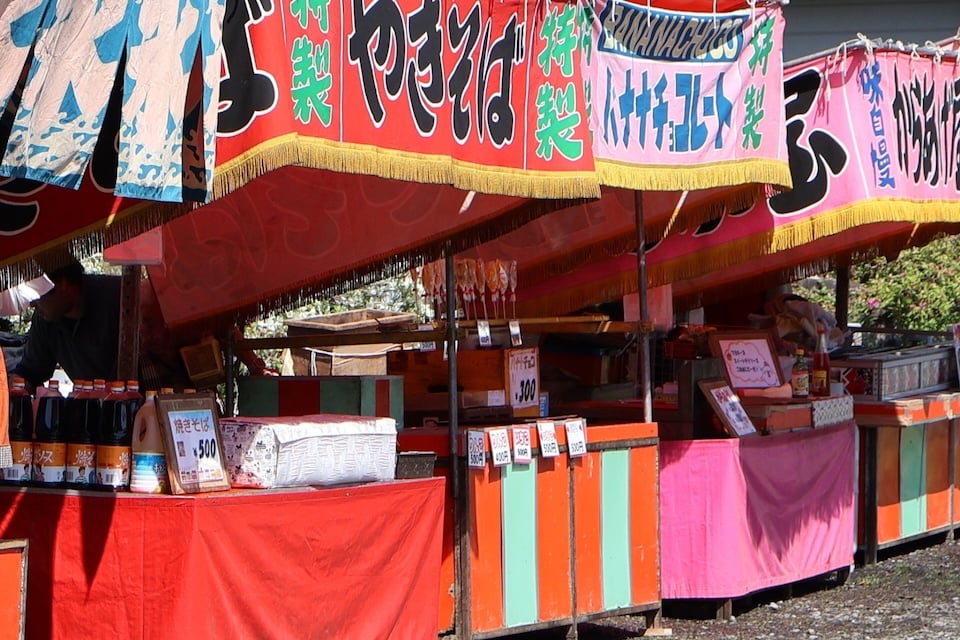
Tokyo’s vibrant food and drink festivals turn cuisine into celebration.These modern matsuri showcase seasonal flavors, regional specialties, and global fare—offering visitors delicious experiences all year long.
Popular Food Festivals
- Tokyo Ramen Show (Oct–Nov, Komazawa): Dozens of regional ramen stalls
- Furusato Matsuri (Jan, Tokyo Dome): Local dishes + parade floats
- Tokyo Wagyu Show (Autumn, Shinjuku/Hibiya): Premium beef tastings
- Gyoza/Niku/Curry Fairs (Various parks): Year-round street food themes
- Oktoberfest Tokyo (June/Oct, Odaiba/Hibiya): German beer tents
- BeerFes Tokyo (May/Sep, Ebisu/Ikebukuro): Unlimited craft beer
Drink Events
- Joy of Sake (Summer): 300+ sake varieties with pairings
- Whisky Expo Tokyo (Spring): Tastings and expert sessions
- Tokyo BarShow (Spring): Mixology and cocktail culture
Whether sampling street food or sipping sake under lanterns, these festivals infuse Tokyo’s dining scene with festivity and community.
Watch for surprise events—your next favorite meal might come with fireworks.
What to Wear and Bring to a Japanese Festival
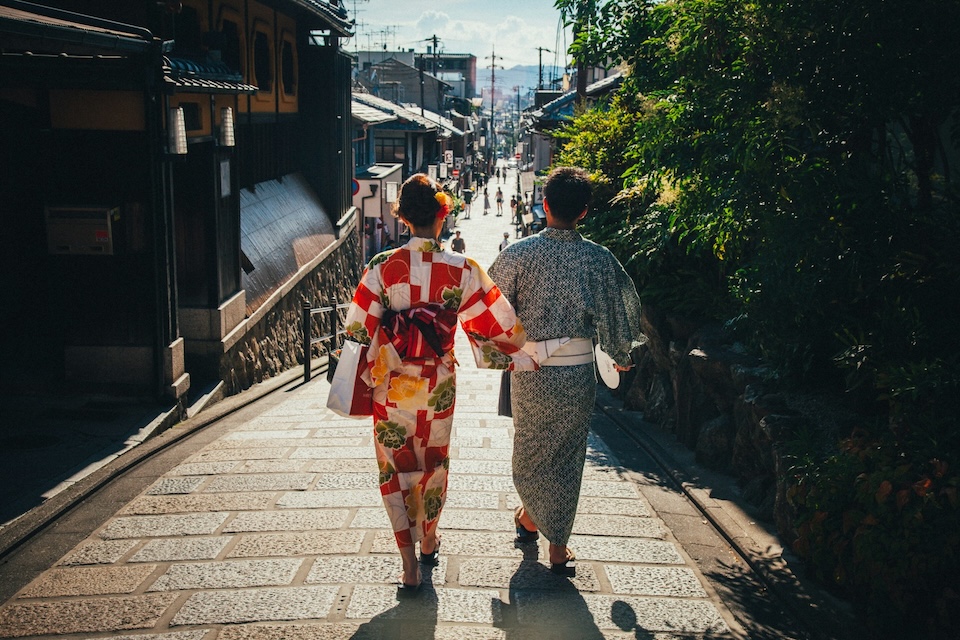
Attending a Japanese festival is exciting, but you might wonder: what’s the best thing to wear and what should you carry with you?
Don’t worry – matsuri are generally casual and welcoming, but dressing the part can add to the fun, and a little preparation goes a long way in ensuring you’re comfortable in the crowd.
Here’s a guide on festival attire, must-pack items, and some etiquette tips to make sure you fit right in and have a great time.
Traditional Festival Attire
Traditional wear like yukata (light cotton kimono) adds charm to summer festivals. Women often choose colorful styles, while men and children may wear simpler jinbei or happi coats. Footwear includes sandals or geta.
Yukata should be wrapped left over right—right over left is for funerals. Dressing up isn’t required, but it shows respect and enhances the festive spirit.
Essentials to Pack for Festivals
For a smooth festival day, pack a fan, towel, water bottle, coins (¥100–¥500), and a backup battery.
Bring a hat or poncho for weather changes, and a light bag for shopping or trash. A zippered pouch keeps your cash secure.
With these essentials, you’ll stay cool, prepared, and enjoy the matsuri like a local.
Festival Etiquette Tips for Visitors
Respect the matsuri by stepping aside for floats, asking before taking photos, and lining up politely.
Dispose of trash properly, stay mindful in crowds, and join dances respectfully. Drink responsibly and honor sacred sites.
With simple courtesy, you’ll blend in and truly enjoy the celebration.
Don’t Miss the Food: What to Eat at Japanese Festivals
Matsuri food is fun, casual, and flavorful. Try takoyaki, yakisoba, yakitori, okonomiyaki, and kakigōri.
Don’t miss taiyaki, grilled squid, candied fruits, or jaga butter. Most items cost ¥300–¥600—perfect for sharing and sampling!
Regional Festival Treats
Regional matsuri treats add flavor to the fun:
Hokkaido’s crab and melon ice, Tohoku’s apples and gyutan, Kansai’s takoyaki and ikayaki, Kyushu’s sata andagi and mentaiko, Nagano’s gohei mochi and ayu. Local bites make festivals unforgettable!
Plan Your Festival Trip to Japan in 2025
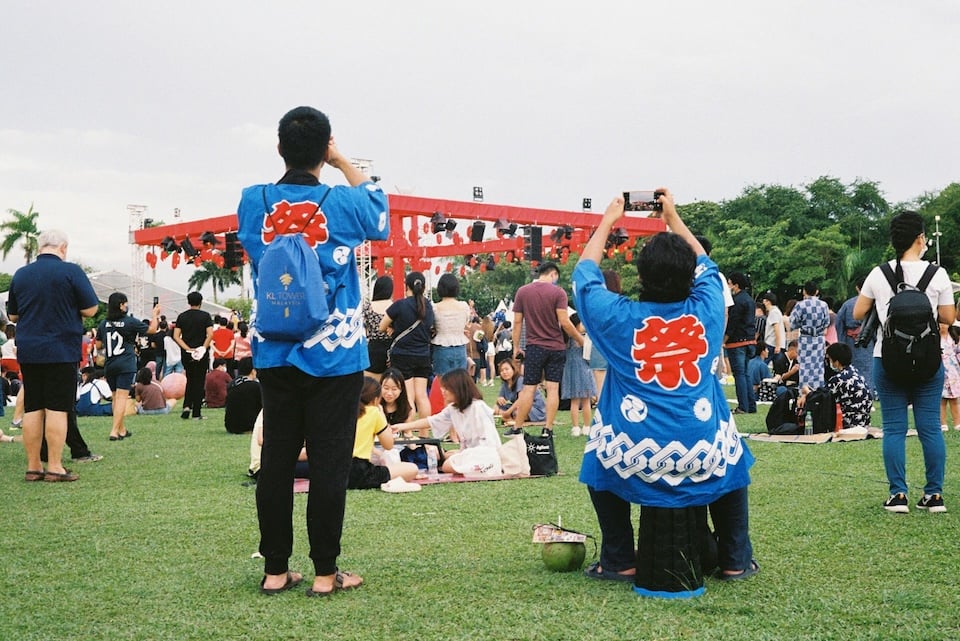
Japan’s 2025 festival calendar is packed with vibrant events nationwide.
With smart planning, you can catch major matsuri, avoid crowds, and create a memorable cultural itinerary filled with seasonal highlights.
Best Months and Regions for Festivals
Spring (April) – Cherry blossoms & historic parades
Enjoy hanami in Tokyo & Kyoto, the Hirosaki Sakura Festival, Takayama Spring Festival (Apr 14–15), and Miyako Odori in Kyoto.
Early Summer (May–June) – Elegant processions
Don’t miss Kanda Matsuri (Tokyo, May 2025), Aoi Matsuri (Kyoto), Hakata Dontaku (Fukuoka), and Eisa in Okinawa.
Summer (July–August) – Peak season with fireworks & dance
Key events: Gion Matsuri (Kyoto, July 17 & 24), Sumidagawa Fireworks (Tokyo), Tohoku’s Nebuta, Kanto, Tanabata, Awa Odori (Tokushima), Obon, and Gozan Okuribi fire ceremony.
Autumn (October) – Tradition meets fall beauty
Top picks: Jidai Matsuri and Kurama Fire Festival (Kyoto), Takayama Autumn Festival, Nagasaki Kunchi, and Shibuya Halloween.
Winter (February) – Snow, light, and rituals
Highlights include the Sapporo Snow Festival (Feb 4–11 est.), Hadaka Matsuri (Okayama), and Otaru Snow Light Path.
Anchor Events for 2025
- Feb: Sapporo Snow Festival, Hadaka Matsuri
- Apr: Cherry Blossoms, Takayama Spring Festival
- July: Gion Matsuri, Sumidagawa Fireworks
- Aug: Nebuta, Kanto, Tanabata, Awa Odori, Obon
- Oct: Jidai Matsuri, Kurama Fire, Nagasaki Kunchi
Tips for Booking Hotels and Navigating Crowds
Book 3–6 months ahead for major festivals like Gion or Sapporo Snow. If hotels are full, stay nearby and commute by train or tour bus.
Expect crowds—especially during Obon. Reserve train seats early and use special festival transit.
Wear comfy shoes, carry cash, and bring a fan or hat. Arrive early for spots, or leave before the finale to skip the rush.
Be polite: stay quiet at night, don’t block entrances, and take your trash. Use festival apps or ask staff for help. Carry your hotel’s address in Japanese.
Travel-Friendly Festival Itineraries
Festival Itinerary Overview
| Season / Theme | Main Route | Key Festivals & Highlights | Notes |
| Summer (Jul–Aug) | Tokyo → Kyoto/Osaka → Tohoku → Tokushima (optional) | • Sumidagawa Fireworks• Gion Matsuri (Kyoto, Jul 24)• Tenjin Matsuri (Osaka, Jul 25)• Nebuta (Aomori), Kanto (Akita), Tanabata (Sendai)• Awa Odori (Tokushima, Aug 12–15)• Obon Week Dances | High-energy season with fireworks, dancing, and heat. Book hotels early and stay hydrated. |
| Spring (Mar–Apr) | Tokyo → Kyoto → Takayama → Tohoku | • Cherry blossoms at Ueno, Shinjuku Gyoen• Miyako Odori• Takayama Spring Festival (Apr 14–15)• Hirosaki Sakura Matsuri• Early Golden Week festivals | Great for blossoms and mild weather. Ideal for first-time visitors. |
| Winter (Feb) | Sapporo → Otaru → Akita/Okayama (optional) → Tokyo | • Sapporo Snow Festival (Feb 4–11 est.)• Otaru Snow Light Path• Yokote Kamakura• Nozawa Fire Festival (Jan 15)• Hadaka Matsuri (Okayama) | Fewer events but unforgettable. Dress warmly and allow extra time for snow travel. |
Additional Options & Tips
| Theme | Suggested Route / Idea | Notes |
| Autumn Loop | Nagasaki Kunchi → Kyoto Jidai Matsuri → Kawagoe Festival | Rich in cultural tradition and fall foliage. |
| Golden Week | Hakata Dontaku (Fukuoka) + Kanamara Matsuri (Kawasaki) | Plan early—Golden Week crowds are intense. |
| Travel Advice | • Choose anchor festivals• Optimize route direction• Consider domestic flights or night trains | Always check official schedules—some use lunar calendars.May align with Expo 2025 (Osaka). |
FAQs About Festivals in Japan
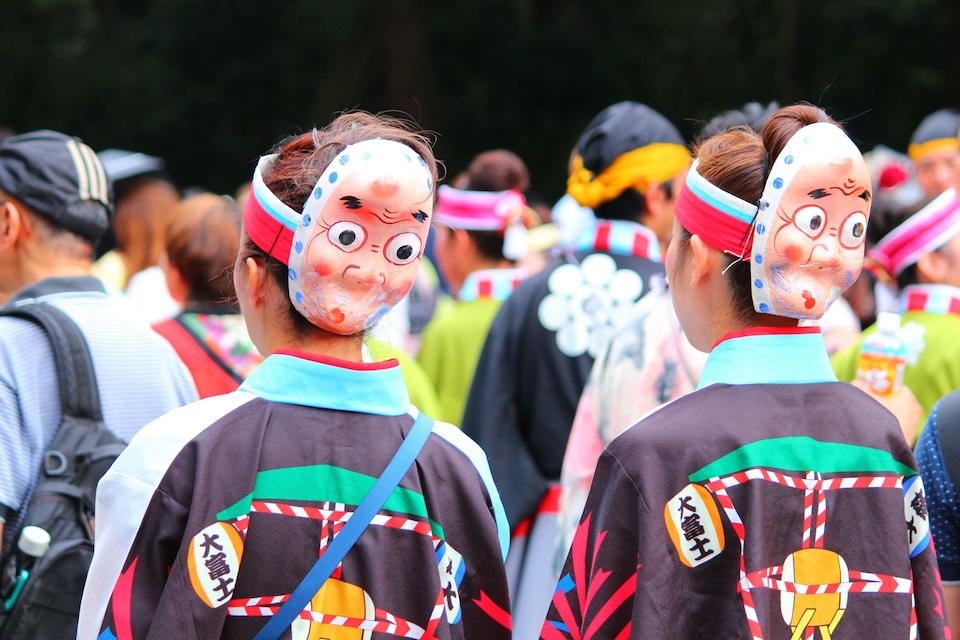
You may still have some questions about attending Japanese festivals, especially if it’s your first time.
Here we’ll address a few common questions to help you feel more prepared and excited for your matsuri adventures.
Are Japanese Festivals Free to Attend?
Most traditional Japanese festivals are free. You can enjoy parades, music, and a festive atmosphere without paying admission. However, some events offer optional paid features like reserved seats (¥3,000–¥5,000), entry to temples, or special performances.
Food, games, and pop-culture expos usually cost extra. Always check event details in advance, but overall, matsuri are budget-friendly and open to all.
What’s the Best Time to Visit for Festivals?
Japan has festivals year-round.
- Summer (July–Aug): Peak season with fireworks and dances; hot and crowded.
- Spring (Mar–Apr): Cherry blossoms and parades in mild weather.
- Autumn (Oct): Colorful foliage and cultural festivals.
- Winter (Jan–Feb): Snow festivals and fire rituals; dress warm.
Top Picks:
Early August (energy), Late March–April (blossoms), February (tradition).
Whatever the season, a matsuri awaits.
Can Tourists Participate in Matsuri?
Yes! Many festivals welcome tourists to join. You can dance, wear yukata, cheer, and enjoy games. Events like Awa Odori and Yosakoi even offer costumes and lessons.
While some roles (like carrying mikoshi) may need advance permission, respectful participation is encouraged.
Just follow local guidance and enjoy the spirit!
Related Guides for Culture Lovers
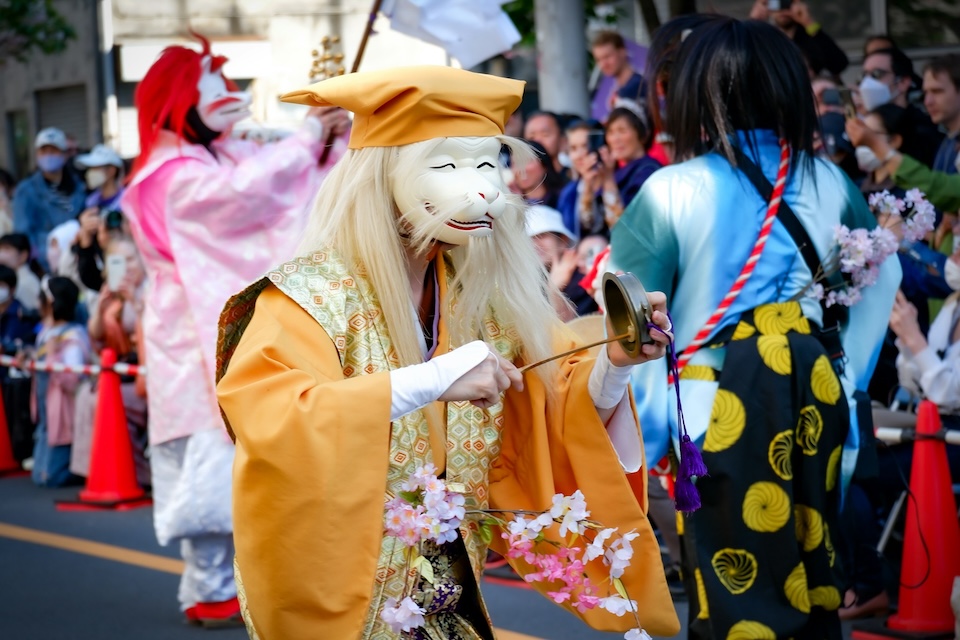
Whether it’s spring, summer, or winter, Japan offers unforgettable cultural moments beyond its major festivals.
If you’re intrigued by Japan’s rich traditions, these related guides and topics will help you dive deeper and plan a truly immersive journey.
Cherry Blossom Season
Hanami (花見, flower viewing) goes beyond admiring blooms. Picnic under sakura trees, enjoy sakura-themed treats, and catch nighttime light-ups. Plan your trip according to bloom forecasts, starting in Kyushu and moving north to Hokkaido.
Summer Activities
Beyond festivals, enjoy cormorant fishing (鵜飼, ukai), firefly viewing, beach fireworks, and suika-wari (スイカ割り). Hike in alpine zones or join locals at smaller summer matsuri for a truly immersive experience.
Winter in Hokkaido
Sapporo and other towns host epic snow events. Enjoy drift ice tours, skiing, or relaxing in a natural hot spring (温泉, onsen). Warm up with Hokkaido specialties like miso ramen and jingisukan BBQ after snowy adventures.
Custom Festival Experiences Curated by MOTENAS JAPAN
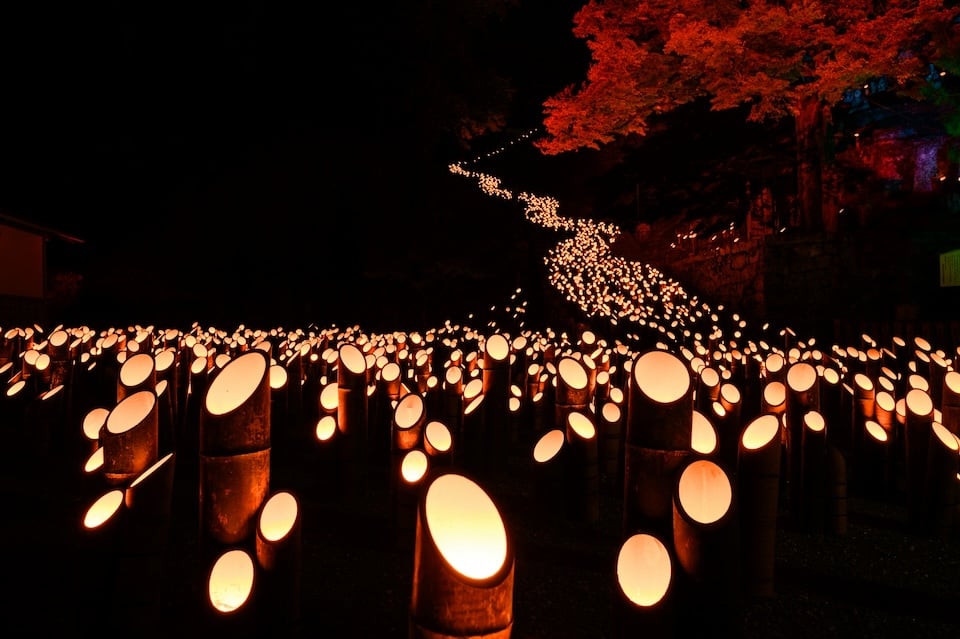
MOTENAS JAPAN offers curated tours that combine the excitement of matsuri with cultural depth and ease. Enjoy insider access, local guidance, and stress-free planning—perfect for travelers who want more than just sightseeing.
These custom experiences elevate your festival journey by handling every detail while immersing you in Japan’s seasonal spirit. From the energy of Gion Matsuri to the elegance of cherry blossoms and the joy of Tokyo’s summer nights, MOTENAS JAPAN ensures each celebration is lived fully—with authenticity, comfort, and wonder.
Gion Matsuri Premium Experience in Kyoto

Enjoy Kyoto’s most iconic festival with front-row seats to the Yamaboko float parade, guided by an English-speaking expert.
Go behind the scenes with visits to float workshops, then stroll lantern-lit streets in a provided yukata during Yoiyama. Highlights include a tea ceremony in a traditional townhouse and even helping pull a festival float. With private transport and pro photos included, this is a stylish, insider way to experience Gion Matsuri.
Cherry Blossom Festival Retreat with Local Culture
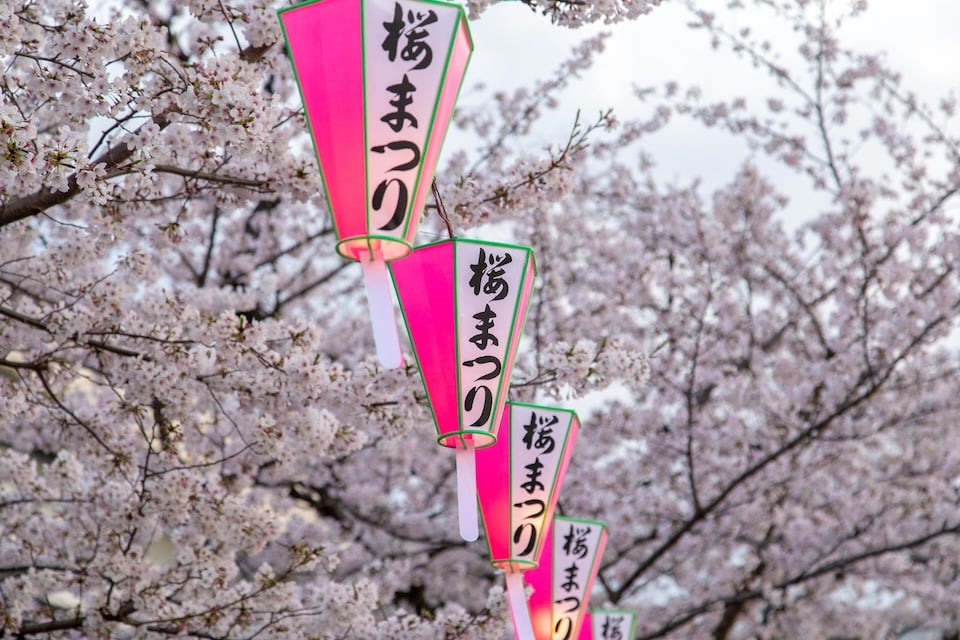
Experience cherry blossom season like a local noble with this multi-day retreat.
Stay at a scenic ryokan with petal-filled open-air baths, visit hidden sakura spots with a cultural guide, and join intimate workshops like sakura mochi making and a kimono-clad tea ceremony. Evenings include shamisen performances or lantern-lit strolls. Blending tradition, beauty, and relaxation, this retreat offers a deeper, more personal hanami experience.
Tokyo Summer Festival Adventure in Yukata
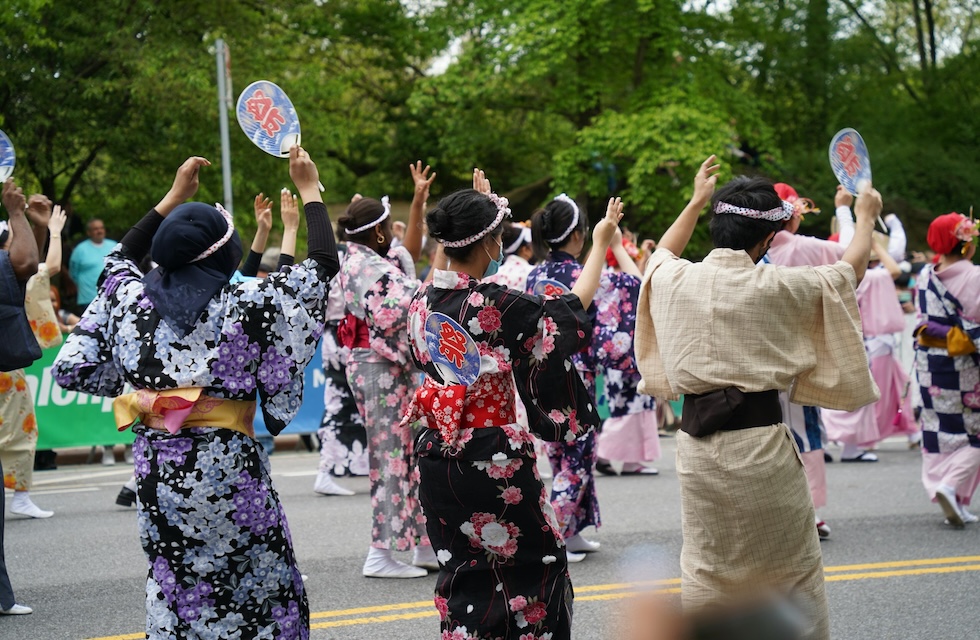
Celebrate Tokyo’s summer festivals in style with this curated experience.
Begin with a yukata fitting, then explore top festivals like Sumidagawa Fireworks from a private riverboat with dinner, and Mitama Matsuri with skip-the-line access and behind-the-scenes insights. Join a Bon Odori dance with local guidance, ride in a cool, stocked vehicle, and end with a rooftop beer garden view.
It’s festive, comfortable, and full of authentic summer joy.
Celebrate Japan’s Seasons in Style
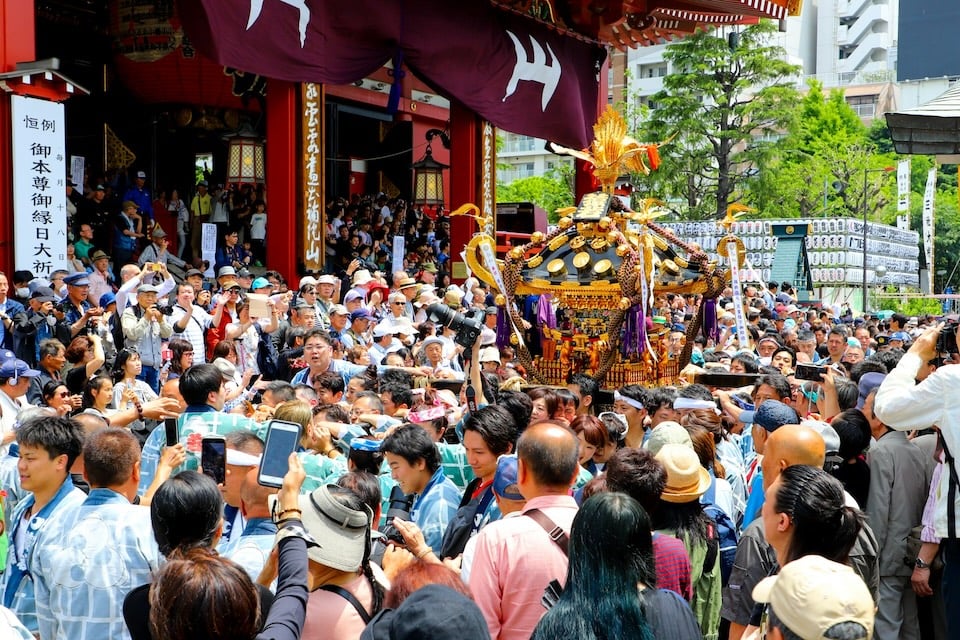
Whether you’re drawn to cherry blossoms in spring, lanterns in autumn, or snowy illuminations in winter, Japan’s festivals offer unforgettable moments of culture and connection.
With a bit of planning and local know-how, your matsuri journey in 2025 can be the highlight of your trip—and a memory you’ll treasure for years to come.

旅をこよなく愛するWebライター。アジアを中心に16の国にお邪魔しました(今後も更新予定)。
ワーホリを機にニュージーランドに数年滞在。帰国後は日本の魅力にとりつかれ、各地のホテルで勤務。
日本滞在が、より豊かで思い出深いものになるように、旅好きならではの視点で心を込めてお届けします!





